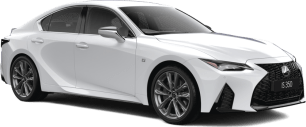While good looks can get you so far, cabin practicality is where things are a little mixed for the SuperVan.
The driver’s seat is generally comfortable, offering a decent amount of support and a centre armrest, but the driving position is heavily compromised.
The worst offender are the pedals as they’re mounted so high that I need to take my foot off the floor to press them. Then the steering wheel only offers tilt adjustment and not reach.
As a result I need to have the seat pushed further back than I’d like to make sure I can press the pedals without making my right ankle hurt in stop-start traffic. Then even with the backrest virtually upright I still need to have arms extended almost fully to reach the wheel.
It’s not the kind of place I’d like to spend a considerable amount of time, which is disappointing because many people who drive this van will likely spend hours behind the wheel at a time.
Thankfully both seats offer both heating and ventilation, which is rather luxurious.
Ahead of the driver, the steering wheel is wrapped in buttery soft synthetic leather, like the seats, and is nice to hold. I appreciate the amount of physical buttons on it. They’re all clearly marked and easy to click.
The steering wheel is also heated and gets hot super quickly. There’s only one setting – on or off.
The digital instrument cluster looks flashy and has a range of informative pages you can cycle through. One even displays a vehicle weight page which is great if you’re unsure if you’re close to the gross vehicle mass (GVM).
Moving across, the touchscreen infotainment system looks glossy and high-definition, but there’s not much to do on it. This also means it’s hard to get lost and even if you do there are shortcut buttons on the right-hand side of the screen.
As standard there’s wireless Apple CarPlay connectivity which is great if you’ve got an iPhone, but terrible if you have an Android phone. This car has no Android Auto support whatsoever.
It’s great to see a continued use of physical switchgear around the cabin for things like the drive modes, regenerative braking settings and most notably the climate control settings. The latter are big and chunky, meaning they’re hard to miss.
In terms of storage up front, it’s fairly mediocre beyond big door pockets. There’s a slide out drawer with two cupholders and another small storage section, as well as another small storage drawer and a glovebox.
Around the side you'll find one of this van's most unique features. When you open up the passenger side front door and slide open the side cargo door, you’ll see this van doesn’t have a B-pillar. There’s only a plastic partition between the passenger and cargo areas.
As a result, the seatbelt for the passenger is mounted on the door. This feels a bit weird in the passenger seat because the seatbelt cuts across more than usual and doesn’t rest on your shoulder.
The SuperVan only comes with a single sliding door. You can’t opt for one on the driver’s side in Australia which is a little disappointing from an ease-of-use standpoint.
At the back there are rear barn doors that have stops at 90 degrees and 180 degrees, before opening all the way up to 270 degrees. This is great because you’ll be able to put whatever is on a forklift into the cargo area.
Speaking of the cargo area, it’s massive. This SWB Low Roof version measures in at 2690mm long, 1795mm wide and 1440mm tall. This equals 6.95 cubic metres, which is considerably more than any similarly sized van, whether that be diesel or electric.
It’s another major benefit of this van being built on a dedicated electric vehicle architecture, rather than a combustion platform that needs to take drivetrain and exhaust components into account.
Payload is 1300kg which is fairly standard for mid-size electric vans.
I like how low the load lip is at the back. This means you don’t have to lift things too high in order to get them in the cargo area.
In terms of amenities there are some lights, tie-down points, as well as three powerpoints for vehicle-to-load (V2L) support at up to 3.3kW. Disappointingly the latter didn’t work in our tester no matter how hard I tried…
Surprisingly under the cargo area is a full-size spare wheel. This is incredibly rare for an EV, especially one that’s all about maximising cargo capacity. It’s great peace of mind if you do long-distance travelling.





.png)
